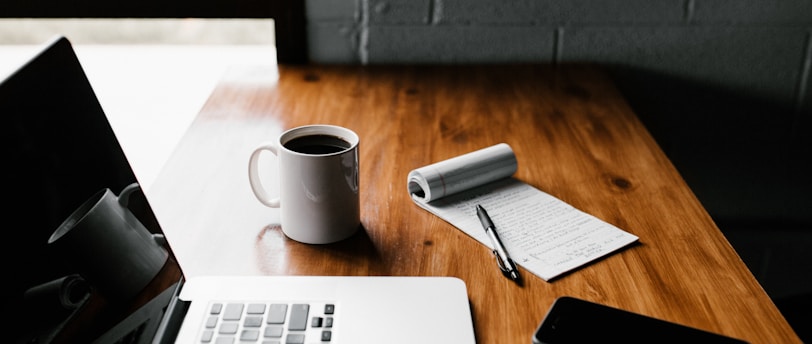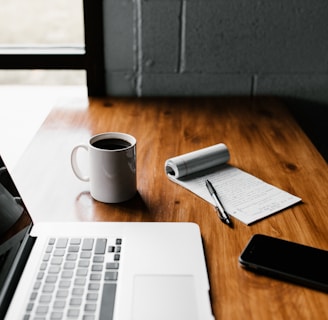7 Essential Invoicing Best Practices for Freelancers in 2024
Mastering invoicing is crucial for maintaining cash flow and professional relationships. Using the 7 essential invoicing best practices discussed here, you'll not only streamline your billing process. You'll also enhance your credibility and efficiency.
Tosin Olokungbemi
10/4/20244 min read


Are you a freelancer struggling to track client payments?
You’re not alone.
The burgeoning gig economy has made it necessary for freelancers to take a more business-oriented approach. Irrespective of your discipline, you have to take on financial tasks like invoicing to receive payments from your clients.
Although invoicing seems like a trivial task, handling it wrongly may affect your professional reputation, client relationships, and cash flow.
This article helps you avoid this by sharing 7 invoicing best practices. As an icing on the cake, you'll also get 7-day free access to Bonsai invoicing software.
Ready? Let’s dive in.
1. Keep Things Professional
A professional outlook portrays you as a reliable and responsible freelancer. As a result, clients take your business seriously and, by extension, your payment requests. This perspective is pivotal to building a healthy freelance business.
So, how exactly can you achieve this?
By using corporate language and a formal tone when sending the invoice. You should also avoid using overly casual terminologies and slang in your invoices, as this may undermine your brand’s professionalism.
2. Use a Standardized Invoice Template/Software
A standardized template or software is vital to keeping things professional.
I know you’re wondering what those are.
Standardized software and templates are pre-designed invoicing formats or tools that help you create professional and consistent invoices. Bonsai is an excellent example.
With Bonsai, you get access to all kinds of tools and templates that help you streamline your invoicing processes and minimize errors. Furthermore, you can maintain your brand’s colors, fonts, and features across different invoices. As a result, your client perceives your invoicing process as a natural part of the ongoing conversation.
All these benefits give you a professional image that clients respect.
3. Pay Attention to Details
As a freelancer, you should maintain meticulous attention to detail when crafting and sending invoices. This ensures that you accurately bill your clients for the exact services you have offered. It also helps you build trust with them, as clients expect precise billings without discrepancies.
There’s more.
The invoice is a legal document that can produce evidence of agreement and services offered in case of future disputes. Therefore, you should fastidiously include the following relevant details on your invoice:
Invoice number
Your (business) name
Your client’s (business) name
A clear description of services offered
Payment due date
Accepted modes of payment (E.g., Direct deposits, cards, online payments like PayPal, etc.)
Incentives for early payments
Late payment penalties.
Including all these details helps you prevent payment disputes and misunderstandings with your clients. Specifically, this applies to payment conditions like due dates and late payment penalties. That said, ensure that all payment terms and details itemized on the invoice were previously agreed upon before the contract started.
Bonsai’s invoicing software helps you set these clear expectations, making the transaction smoother and faster and thus improving the overall customer experience.
4. Send Invoices On Time
When it comes to invoices, there’s no time like the present.
Here’s why:
Late invoices could lead to delayed or non-payments, which may disrupt your cash flow. On the other hand, timeliness keeps your clients updated about their financial obligations because the project is still fresh in their memories.
With an invoicing software like Bonsai, you can automate this process to speed things up. Bonsai relieves you of the stress by allowing you to set up recurring invoices, which can be helpful when working with long-term clients.
It gets better.
The software also helps you manage multiple invoices when working with two or more clients. Finally, automating your invoices with Bonsai helps you avoid errors while sending your invoices on time.
5. Keep A Thorough Record Of Your Invoices
It is important to keep a detailed, organized, and accessible record of your invoices for purposes such as financial audits, tax filings, and financial planning. It is also vital for personal finance analysis and future references in cases of disputes.
If all that sounds like financial jargon to you, excellent invoicing software like Bonsai simplifies the entire process. The software makes it easy to track payments, invoicing history, and even outstanding balances.
6. Maintain Timely Followups
You should send gentle reminders to clients when payments are overdue. Although many freelancers often find this task awkward, following up with clients politely and regularly only shows that you’re organized and serious with your business.
To do this effectively, maintain a warm tone. In your follow-up messages, use an upbeat, familiar, and positive approach.
Here’s an idea.
Start by thanking them for their trust and cooperation on the just-concluded project. After this positive introduction, subtly bring up the issue of the overdue payment while referring them to the invoice you sent earlier.
But here’s the catch;
You have to ensure your messaging is polite yet firm. When dealing with clients, you don’t want to come across as too pushy or too soft.
Following these best practices helps to eliminate any further awkwardness that may be associated with chasing late payments.
However, you can take all these off your plate by using Bonsai’s automated reminders for invoices. This feature helps you follow up with your clients at an interval convenient for you and your client. Bonsai automatically sends your clients notifications on the following schedules
1 week before the payment due date
1 day before the payment due date
1 week after the payment due date
2 weeks after the payment due date
Automated reminders are the most efficient way to maintain timely follow-ups with your client without appearing too pushy.
7. Reconcile And Verify Payments
Receiving payment alerts can be very refreshing, especially when they are long overdue. However, before you start spending, it is important to crosscheck the amounts received with the invoices issued.
This practice helps you spot errors and discrepancies early and address them promptly. It also helps you account for all financial transactions.
For example, using the Bonsai invoicing software gives you a comprehensive overview of all your invoices over time. This gives you a panoramic view of your invoices over a specified period.
Elevate your invoicing game with Bonsai
Bonsai is built with these best practices in mind. The templates give you a professional appearance by calling your attention to important details. Likewise, the software makes it easy for you to send invoices on time through automation. It also maintains timely follow-ups through scheduled reminders.
Start Bonsai’s 7-day free trial to start enjoying these benefits right now.
7 Essential Invoicing Best Practices for Freelancers
Compelling narratives that drive desired actions effectively.
© 2024. All rights reserved.
